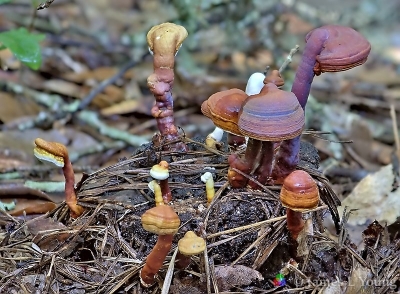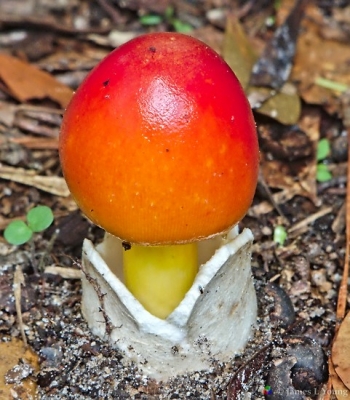Here we have a photo of a beautiful cluster of Reishi (Ganoderma lucidum) mushrooms growing on a very short tree stump in our yard.
Reishi mushroom can grow into many unusual and often mystical shapes.
(click to enlarge)
The Reishi mushroom is a highly desired medicinal mushroom and has been consumed, mostly as tea, for at least two thousand years in China where it is called lingzhi. It has sometimes been refered to as the “Mushroom of immortality”.
I find the best way to process wild Reishi mushrooms is to slice them into thin sections while they are still moist since dried reishi mushrooms are very woody.
Once sliced I dry them and keep to use for tea, which I make by gently boiling/simmering them in water.
It is also possible to get an double extraction by taking the leftover tea mushroom slices and soaking them in alcohol to make a tincture. The tea and tincture contain different medicinal compounds.
As always when taking wild plants or fungi please leave some in place to repopulate the area.
Thanks for visiting!
Jim



































